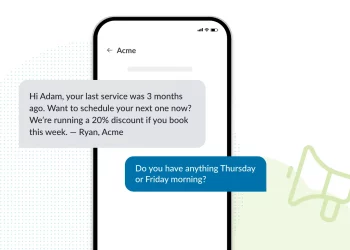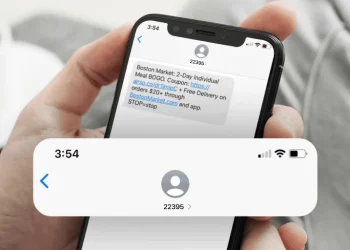SMS, an abbreviation for Short Message Service, is a mode of communication that exchanges a text message between two mobile devices. It is called ‘short’ because of the SMS’s standard length, 160 characters (numbers, letters, or symbols). Besides its definition, we will discuss in this blog what SMS is and how texting works.
A text message or SMS is helpful for individuals, customers, and businesses. People tend to connect for various purposes, so SMS is one of the easiest and simplest ways to communicate. For businesses, you can easily interact with your target audience, foster a better relationship with clients, and win trust. Without effective communication and a power-packed text messaging website, businesses can not survive in the ever-changing digital marketing world.
What is SMS?
SMS (Short Message Service) is a text messaging component of most telephone, internet, and mobile device systems. It uses standardized communication protocols that allow mobile devices to exchange short text messages. The term ‘SMS’ is used for both user activity and short text messaging in many parts of the world. SMS is also employed in direct marketing, known as SMS marketing.
As used on modern phones, SMS originated from radio telegraphy in radio memo pagers using standardized phone protocols. Adding text messaging functionality to mobile devices began in the early 1980s. The SMS concept was developed in the Franco-German GSM cooperation in 1984 by Friedhelm Hillebrand and Bernard Ghillebaert. The key idea for SMS was to use a telephone-optimized system and to transport messages on the signaling paths needed to control the telephone traffic during periods when no signaling traffic existed.
According to the research paper titled ‘A large scale study of text-messaging use, “Text messaging is a method for sending short 160-character messages between mobile phones that has become a popular, global method of communication. In the past decade, text messaging use has grown from 12 million to 135 billion messages sent every month. The popularity of text messages can be attributed to various factors, such as cost per message compared to voice
minutes, social appropriateness, ease of use, and the lightweight nature of sending messages. Text messaging has also increased due to interaction with online services such as bank statements, social networks, and chat clients.”
How SMS Works
How does your SMS make its way across the room or to another person’s phone? To send a message out of your phone, electricity from your battery jiggles electrons in your phone’s antenna, giving off a particular light. When your phone sends a letter, it converts it into binary codes. Then the antenna in your phone sends out the ones and zeros in short jiggle stop, jiggle stop, jiggle stopped.
The antenna in your phone is too small and can only send a message a few miles. Antenna towers presiding over an area of land are called a cell. When you send a text from inside a cell, a sphere of invisible light goes outward from your phone to an antenna tower, jiggling its electrons and transferring the message.
The message transfers from the sender to the nearby antenna tower when you send a text message. The antenna tower sends the text to an SMS center, from where the message reaches a nearby antenna tower to the recipient. Finally, the tower transmits the text message to the recipient’s phone.
Benefits of SMS
- SMS reduces the communication gap between people; your message will reach your customer as a business.
- SMS has a significantly higher open rate as compared to email. Text messages have more than 95% opening and response rate.
- SMS allows a quick exchange of information and updates. People quickly read SMS updates within a few seconds of receiving them on their mobile phones.
- SMS enables marketers to exchange transactional messages, such as notifications related to order details, shipping status, event updates, etc.
- You can offer customers a great experience by integrating SMS notifications with email marketing automation tools.
- Redirect people to your website by including hyperlinks in your SMS messages. It allows you to persuade customers to check certain product links.
How to Send SMS Notifications
- Collect a list of phone numbers.
- Create an SMS campaign.
- Preview and send your text message.
Examples of SMS Notifications
- Hey Booklover, we have missed you. Use promo code WELCOMELB on any purchase of $50 and above to get an additional discount of 5% off at www.powells.com.
- Enjoy flat 40% OFF at our new IDEAS store and celebrate its reopening near Cooper Square.
- Your favorites from the Summer Season have been restocked at 50% off.
Key Takeaway
Now you know how SMS notifications work, the best way to leverage this business opportunity is to start integrating SMS campaigns into your marketing strategy. It is cost-effective, faster, and more effective than any other marketing channel. Check out what PowerTextor offers for your business growth.














